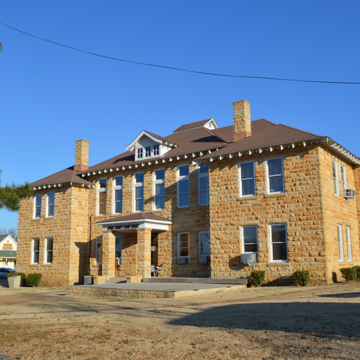This two-story courthouse for Stone County, appropriately constructed of stone, dominates Mountain View’s town square with its weighty appearance and rusticated masonry. However, the building’s modest entrance, hipped roof, central dormer, and chimney give it the effect of an oversized house. The courthouse was built by contractor C. M. Leird. Early-twentieth-century one- and two-story commercial buildings of stone construction surround the courthouse square, forming a harmonious ensemble with the courthouse. In some buildings the stone is laid in regular courses, but others are composed of irregularly sized blocks that in their shapes and color ranging from buff to brown form a pattern that constitutes the ornamentation.
The Arkansas Folk Festival was founded in Mountain View in the 1960s and is one of the several musical performances that take place in the summer months, many of them here in the town square.


